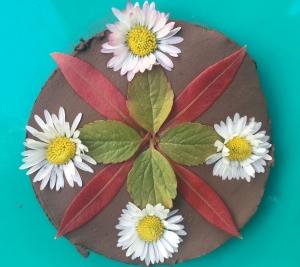
10 summer nature activities for kids
The summer holidays are a great time to get kids outside and excited about nature. Whether building a bug hotel, getting up close to pollinators or creating natural rainbows, these fun activities are a great way to get the whole family into the great outdoors.
Design and make a birdfeeder
Classmates can’t come round to play, but restrictions don’t apply to our feathered friends. Make a bird feeder
from an old milk or juice carton or use Lego and fill with goodies to attract the birds. If you don’t have bird seed then cooked pasta or rice, boiled potatoes, cheese, uncooked and unsalted bacon rind, raisins, sultanas and soft fruits are all suitable. Check the RSPB website.
Encourage children to come up with their own design. They can draw it first and evaluate it afterwards – what worked well, how could they improve their design? Paint them to make them look more attractive or cover them with sticks.
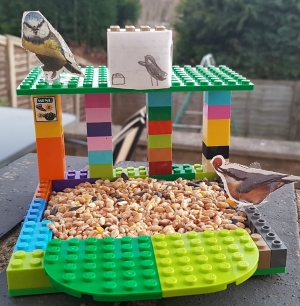
Make a worry doll
This is a worrying time for children as well as grown-ups. Give children time to relax and express their worries by making a worry doll using twigs and wool.
In the villages of Guatemala in South America, children tell their worries to a small doll then tuck it under their pillow at night to take their worries away.
- Collect 2 small sticks (one larger than the other). Your worry doll should be small enough to keep in your pocket.
- Tie the sticks together to make a cross, wrapping string or wool around to secure them.
- To make a face, peel off a piece of bark on the top of the stick, or whittle the bark using a potato peeler to peel off the bark, so you have space you can draw a face on with a pen.
- Dress your worry doll. Wrap the coloured wool around the arms, legs and body, dress with material scraps or leaves, flowers, etc.
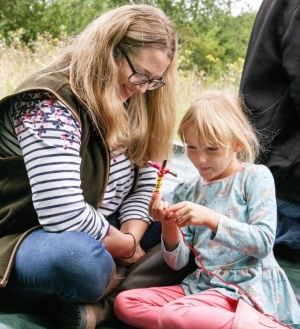
Build a bug hotel
Improve your garden as a habitat for wildlife by making a bug hotel. All you need is an empty plastic bottle and some old newspaper!
Talk about the creatures that might live in the bug hotel: ladybirds, woodlice, earwigs and the other animals that might benefit through the food chain – for example the birds that can eat the bugs to feed their young.
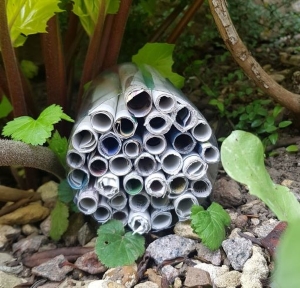
Go on a bug hunt
We’re going on a bug hunt! Challenge yourself to see how many different invertebrates (creepy crawlies) you can find in your back garden in 15 minutes.
Don’t worry if you don’t have your own bug pot – yoghurt pots or the bottoms of plastic bottles will work just as well.
Use this garden bug chart to ID your finds.
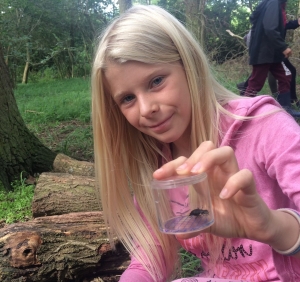
Get up close to pollinators
Catch some buzzing pollinators in jam jars and examine them closely. Can you see the pollen baskets or hairs on the bee’s legs? Why are they important?
Now look more closely: It might look like a bee, but flies are cunning masters of disguise. Flies have very short antennae and very big eyes.
Why is it an advantage for flies to look like bees or wasps? Once you’ve examined your pollinators, release them back into the wild.
Health & safety point: obviously some of these insects have a nasty sting! You will need an adult to help you catch the pollinators, and make sure you are very gentle so no one gets hurt. If anyone in the family is allergic to bee or wasp stings then this activity is probably not for you!
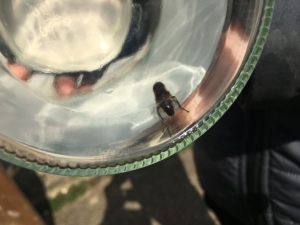
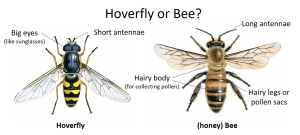
Create a natural rainbow
We love all the rainbows in people’s windows cheering everyone up. Can you make a rainbow using natural things you can find in your garden like flower petals, colourful bark or pebbles, sticks and leaves?
You could make a giant rainbow on your lawn, or on a rainy day stick your natural finds on paper to display in your window.
Make sure you set the ground rules first – what flowers & leaves are they allowed to pick, or can they just collect fallen petals from the ground?

Get arty with kitchen roll
On a rainy day learn that plants need water to grow by making your tree artwork bloom.
Fold a piece of kitchen roll in half. On the front page of your folded kitchen roll draw a tree trunk and branches before opening your kitchen roll and drawing the detail – leaves, blossom, birds or fruit – on the inside page.
Finally drop your artwork into a tray of water and watch your artwork transform before your eyes!
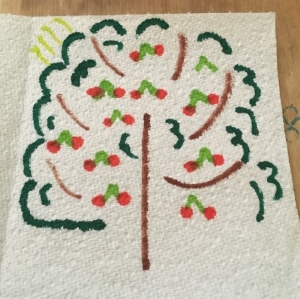
Find patterns in nature
Today see what patterns you can find in your back garden or local green space and collect lots of different imprints with play dough, plasticine or clay.
Many patterns occur in nature: the arrangement of leaves and petals on plants, or textural patterns on bark and rocks. Others you find will be man-made.
Use language to describe the patterns, textures and shapes you see, sort the patterns into groups based on their properties, or play a game to see if you can match the imprinted patterns with the objects that made them.
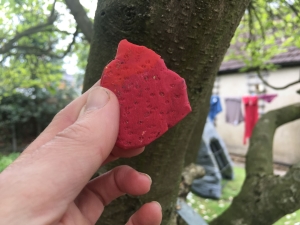
Go butterfly spotting
Butterflies come out to play on sunny days – the warmer the weather the more you will see in your back garden or local green space as they visit flowers to get the food they need for energy.
See how many different types of butterfly you can spot in your back garden or during your daily exercise walk. Use this this fantastic spotter sheet from our friends at The Woodland Trust to ID them.
If you are very careful and gentle you may be able to temporarily catch the butterflies to get a closer look, but make sure an adult helps to make sure you don’t damage their delicate wings.

Make a mandala
Make a mandala with clay, play dough or plasticine, decorated with natural objects you can find in your garden or during your daily walk.
This is a fantastic way of encouraging children to look at everyday natural objects more closely, and notice and use the colours and shapes creatively. It’s also a great way of reinforcing learning in maths, thinking about patterns, symmetry and angles.




